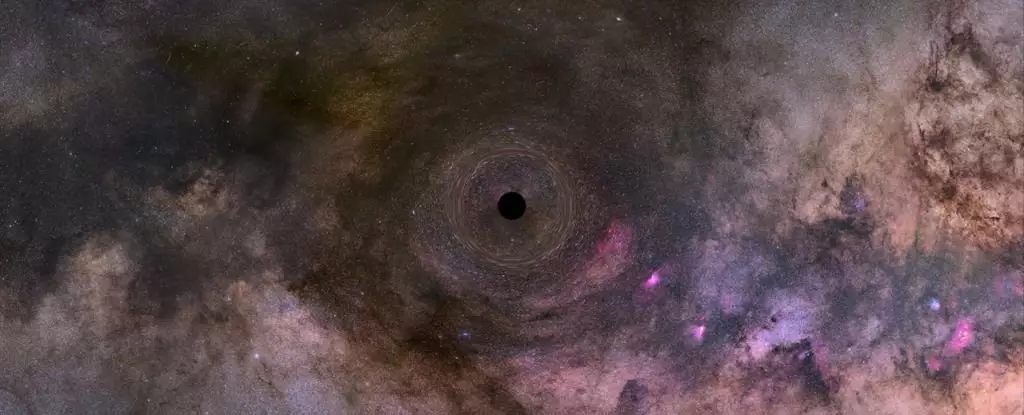In a remarkable twist of cosmic storytelling, astronomers have confirmed the existence of a solitary black hole for the first time. This discovery not only piques curiosity but also changes our understanding of these enigmatic entities that populate the Universe. The black hole in question has a mass roughly 7.15 times that of our Sun and resides about 4,958 light-years away from Earth, careening through the Milky Way at a speed of approximately 51 kilometers per second. Its solitary nature sets it apart from expected norms, as most black holes are typically surrounded by stellar companions whose gravitational influence provides clues to the black holes’ existence.
The Mechanism of Discovery
How does one identify an unaccompanied black hole in the vastness of space? The process that led to this remarkable identification is carefully crafted and astoundingly intricate. Lacking the telltale signs commonly associated with black holes—like the gravitational influences on nearby stars—this solitary entity revealed itself through gravitational microlensing. This process involves the black hole’s gravitational field bending and amplifying the light coming from a background star, thereby altering its apparent position in the sky for a fleeting moment. Such phenomena only occur under specific conditions and not every day do astronomers have the opportunity to witness them.
This black hole first caught the attention of astronomers in 2011 as part of two pivotal surveys: the Optical Gravitational Lensing Experiment (OGLE) and the Microlensing Observations in Astrophysics (MOA). Accumulating data from these observations, as well as subsequent analyses from the Hubble Space Telescope, proved vital for corroborating the black hole’s existence. Over six years, the Hubble conducted multiple observations to monitor the warping effects on starlight, culminating in a comprehensive understanding that this dark object indeed harbored characteristics of a black hole.
The Evolution of Its Identification
The path to definitive identification was far from linear; it was riddled with contradictions and debates among scientists. Initially, the amassed data resulted in an estimation of the black hole’s mass being around 7.15 solar masses. However, a later analysis in 2022 revised this estimation downwards, suggesting it could be a neutron star instead, thereby igniting a discourse amongst astronomers. Such disagreements exemplify the rigorous scrutiny that scientific discoveries undergo.
It wasn’t until additional observations and refined data collections emerged that consensus began to form. In a notable twist, a collaborative effort led by scientists who previously studied the phenomenon returned with more evidence supporting the black hole hypothesis. Their additional Hubble observations and updated data form a conclusive narrative pointing toward the object being a stellar-mass black hole rather than a neutron star, solidifying it as an exceptional find in the landscape of black hole research.
The Broader Implications of Solitary Black Holes
The implications arising from this discovery go beyond mere curiosity; they challenge our preconceptions of black holes in the cosmos. For a long time, the scientific community operated under the assumption that black holes are primarily social creatures, often found within binaries or clusters. This black hole’s solitude serves as a beacon of new possibilities, hinting at a more diverse population of black holes roaming the Universe undetected. The findings invite scientists to reconsider how black holes form, evolve, and interact—or rather, how some may gravitate toward isolation.
Astronomers also meticulously scrutinized the surrounding vicinity for signs of a companion star. Their investigations concluded that nothing, larger than 0.2 solar masses, exists within a vast radius around the black hole, strengthening its solitary reputation. While this black hole is confirmed, it may not be the last of its kind. The Universe is vast, and the potential for more of these elusive dark entities to exist is tantalizing. Indeed, this solitary black hole is a potent reminder of the mysteries that permeate the cosmos.
In essence, the discovery of this solitary black hole has opened up new avenues of exploration, emphasizing that the Universe remains full of surprises waiting to be unravelled, each with the power to reshape our understanding of the cosmic narrative. The journey has only just begun, and one can’t help but wonder what else lies hidden in the depths of space.

